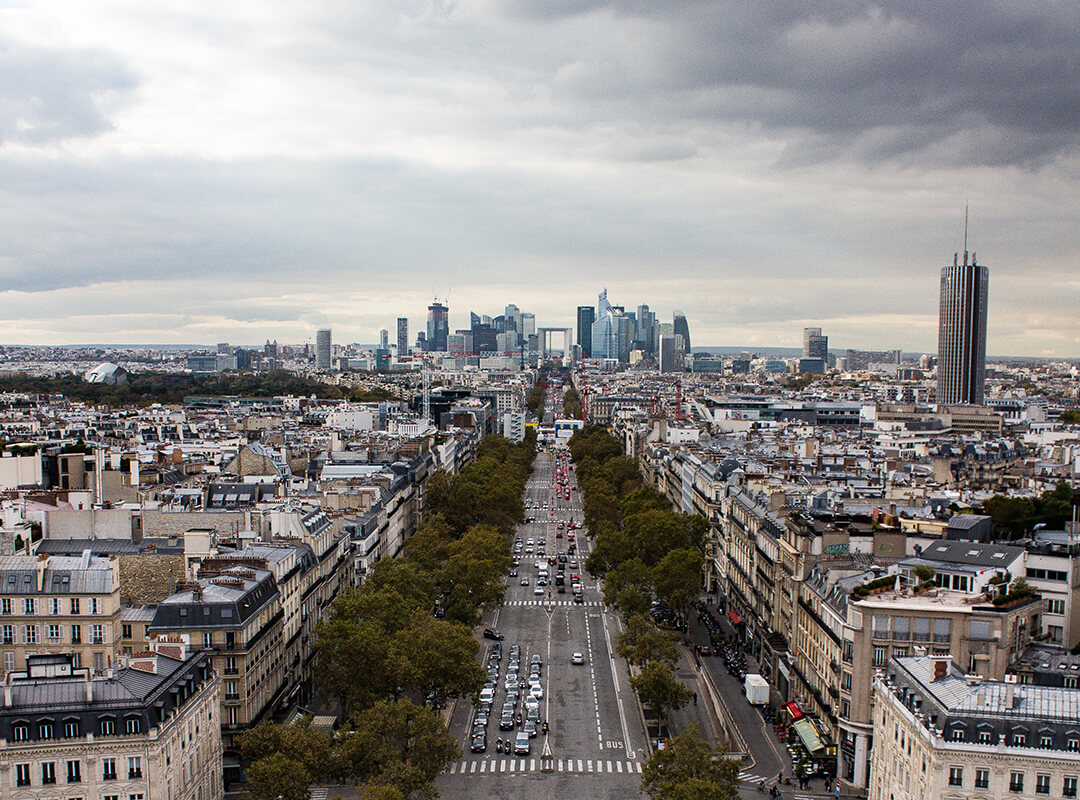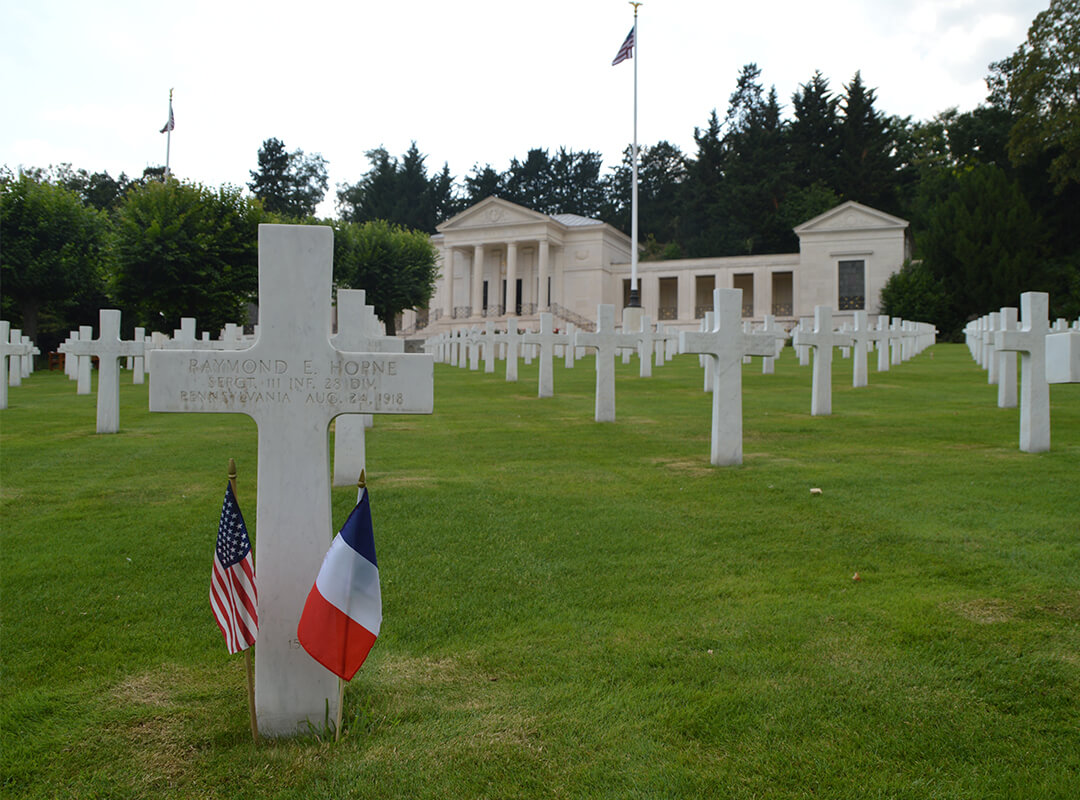
Your stay
To complete your visit to the Parc des Princes, why not discover the other cultural and historical sites in the capital?
We have selected for you a set of places easily accessible from the stadium, to make your stay a memorable one.
The monuments
"Paris is the great reading room of a library through which the Seine flows". The philosopher Walter Benjamin was not mistaken in describing Paris in this way. With a history of nearly 2000 years, Paris has known how to cross the ages by imposing itself very quickly as one of the main European capitals. Many Parisian monuments are still today among the most visited in the world.
The Eiffel Tower
The Eiffel Tower and Paris Saint-Germain, a great love story! The Iron Lady is present on the logo of the Red and Blue since 1972, after the creation of the designer Vallot. It is also in front of this emblem of Paris that the legends of the club have been immortalized after their arrival at the club. Ibrahimovic, Di Maria and Navas are some of them.
It was on the occasion of the 1889 Universal Exhibition, a date that marked the centenary of the French Revolution, that a great competition was launched in the Official Journal. The first shovels were turned on January 26, 1887. On March 31, 1889, the Tower was completed in a record time - 2 years, 2 months and 5 days - and was a true technical feat.
But what would a creation be without its creator: an engineer by training, Eiffel founded and then developed his company specializing in steel structures, of which the Eiffel Tower is the crowning achievement, before dedicating the last thirty years of his life to experimental research activities.
Coach's tip: from nightfall until 1am, don't miss the glitter of the Eiffel Tower across the Paris sky.

The Arc de Triomphe
A unique monument as much by its architecture as by its location, the Arc de Triomphe is a must-see during your stay. Wished by Napoleon I in 1806, the Arc de Triomphe was inaugurated in 1836 by the French king, Louis-Philippe, who dedicated it to the armies of the Revolution and the Empire.
It is also a high place of great national events such as the parade of July 14. The Unknown Soldier was buried on the terreplein in 1921. The flame of remembrance is rekindled every day at 6:30 pm, and even by the President of the Republic in person during the commemorations of May 8 and November 11.
Coach's tip: for the most courageous, the 284 steps up to its summit offer you one of the most beautiful views of the capital.

La Défense district
The economic heart of Paris, the La Défense district straddles several towns in the Hauts-de-Seine region such as Puteaux, Courbevoie and Nanterre. Built in the 1960s, this business district has grown over time to become the second largest in Europe and the fourth largest in the world. It is the most western point of the historical axis that starts at the Louvre Palace, goes up the Champs Elysées, crosses the Arc de Triomphe and finally the Pont de Neuilly.
Coach's tip: the name of La Défense comes from the statue named La Défense de Paris, erected to the glory of the soldiers who defended the city during the Franco-German war of 1870.

The Mont Valérien
Overlooking Paris from its 162 meters high, the Mont Valérien is a place of history. A medieval place of worship that became a military fortress during the 19th century, the name Mont-Valérien evokes certain events of the 1870 war and those of the Commune. During the Second World War, it took on a particularly tragic connotation since it was used as a place of execution. A moving circuit allows you to follow the path taken by those who walked to the ordeal. In homage to all the dead of the Second World War, a memorial was erected and inaugurated by General de Gaulle on June 18, 1960.
Guided tours of Mont Valérien are free. They last about 1h30 and take place every day except Monday.

The museums
"Add two letters to Paris: it's heaven." French writer Jules Renard was hardly exaggerating: the City of Light is a veritable open-air museum, a paradise for art, heritage and history lovers.
Fondation Louis Vuitton
Located in the Bois de Boulogne, a stone's throw from the Jardin d'Acclimatation, the Fondation Louis Vuitton's mission is to support contemporary French and international artistic creation, while making it accessible to as many people as possible through a permanent collection, temporary exhibitions and numerous events. Founded in 2014 by architect Frank Gehry, it offers a program presenting the history of artistic movements of the 20th and 21st centuries.
At the heart of a bright, innovative, and simply unique building, visitors enjoy numerous panoramic views accessible from the building's various terraces.
Coach's tip: many celebrities have been muse of the French brand, such as Madonna, Jennifer Lopez and Kate Moss. But an emblematic sportsman has also posed for Louis Vuitton campaigns: Mohamed Ali.

The Palais de Tokyo
Inaugurated in 1937 on the occasion of the Universal Exhibition, the Palais de Tokyo stands out in the museum landscape of the capital. Made mainly of steel and concrete, it presents visitors with a series of temporary exhibitions on the themes of music, fashion and design. Its exhibition space makes it one of the largest contemporary art centers in the world.
Like the regular "Cartes Blanches" and "Nuits Blanches" events, the visit is a unique, informal and free experience. With its Tok-Tok workshops and its initiation to contemporary art, the Palais de Tokyo is accessible to families and children.
Coach's tip: nicknamed the Dome, the Palais de Tokyo is considered a mythical spot for skateboarding in Paris, because of its vast esplanade and its marble steps.

The musée de l'Homme
Located opposite the Tower in the Palais de Chaillot, the Musée de l'Homme offers a new vision of the human species by presenting the various biological, cultural and societal aspects that characterize us as well as the history of our evolution over the centuries.
Who are we? Where do we come from? Where are we going? The museum aims to answer these three major questions through its laboratory, collections, conferences and film screenings.

The Yves Saint Laurent museum
The Yves Saint Laurent Paris Museum, dedicated to one of the most emblematic couturiers of the 20th century and a figure of French fashion, exhibits the work of the couturier in the heart of the historic site of his former fashion house. Through a retrospective tour and thematic temporary exhibitions, visitors will be immersed in nearly 30 years of creation of the French couturier and designer.
The visit presents about fifty models accompanied by sketches, photographs, videos and other accessories, within the former salons of haute couture, including the historic studio of Yves Saint Laurent, thus immersing the public in the heart of the creative process.

Other places of interest
But Paris is not limited to its countless museums and monuments. It is also a city with many sports sites, and where it is possible to stroll in peace in the heart of its many green spaces.
The Stade Jean Bouin
Located just a stone's throw from the Parc des Princes, the Stade Jean Bouin is the official stadium of the Stade Français Paris, one of the Top 14's rugby clubs.
A resolutely modern stadium, respectful of the environment, the Jean Bouin Stadium is today at the cutting edge of technology with the use of low carbon energy materials, solar panels to cover the needs of lighting, as well as the recovery of rainwater used to water the lawn.
Coach's tip: the Paris Saint-Germain women's team has already played many times at Jean Bouin, both in the D1 Arkema and in the Champions League.

The bois de Boulogne
Twice and a half times larger than Central Park in New York, the Bois de Boulogne is the largest recreational area in western Paris, and one of the lungs of the capital with the Bois de Vincennes.
Former hunting ground of the kings of France, the Bois de Boulogne includes the Bagatelle park, the Auteuil greenhouse garden, the Pré-Catelan and the Jardin d'Acclimatation. It offers numerous pedestrian walkways, 15 kilometers of cycling-tourism itineraries, as well as various facilities designed to satisfy all publics: playgrounds for children, the Musée en Herbe, the Fondation Louis Vuitton, picnic areas, bicycle and boat rentals on the Lower Lake, the Auteuil and Longchamp racecourses, and restaurants such as the Près Catelan,

Roland Garros
Along with the Parc des Princes, it is the other emblematic sports site of the Porte d'Auteuil: Roland Garros. Named after the famous French aviator, the Roland Garros site has been recently renovated, with the creation of the superb Suzanne Mathieu court and the addition of a retractable roof on the Philippe Chartrier court.
The French Open takes place there every year at the end of May, and closes the clay court season before the grass court season. Rafael Nadal is undoubtedly the king at the Porte d'Auteuil, with no less than 14 successes on the Parisian clay court.
Coach's tip: the longest match dates back to the 2004 edition, with a 100% French opposition between Santoro and Clément that lasted 6h33!

The Paris aquarium
Inspired by Jules Verne and his novel "Twenty Thousand Leagues Under the Sea", Cinéaqua is the first aquarium in the world. Nestled in the Trocadero gardens, renovated in 2006, it now has 13,000 fish, 38 sharks, 2,500 jellyfish and 700 coral colonies on 3,500m².
Many interactive animations, shows and a restaurant will allow you to fully enjoy your experience while discovering the marine world.

